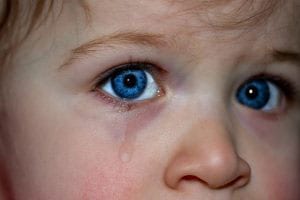For the first year of his life, Celebi Remillard and his mother Tatyana frequently took the drive from Klamath Falls to Portland to visit his care team. When Celebi was 4.5 months old, doctors diagnosed him with a rare genetic disorder called spinal muscular atrophy (SMA). Many children with SMA require supportive care such as physical therapy, noninvasive respiratory support, bracing, and a gastrostomy or tracheotomy. Spinraza was also approved for SMA in 2016. But there have, largely, not been treatments that can be administered at home. As a result, families like the Remillards often have a financial and travel burden placed on their shoulders.
Of course, Tatyana would do whatever she could for her son, as well as her four other children; the entire family is close and advocates for Celebi’s care. Tatyana even says that the siblings do their best to make Celebi feel loved and included.
A new treatment may now reduce the burden on the family and help Celebi gain new skills. KDRV reported that Celebi began taking Evrysdi (risdiplam), a prescription medicine designed to help the body to create more SMN protein. Clinical studies found that Evrysdi contributed to more than double the production of SMN protein in a 4-week period, with durable and sustained responses for over 2 years. Even better—the fact that Celebi can receive the treatment at home!
Tatyana has already seen improvements in Celebi’s mobility and hopes that, moving forward, it will continue providing benefits to her son so that he can live a fulfilling and happy life.
A Brief Overview of Spinal Muscular Atrophy (SMA)
Spinal muscular atrophy is a genetic neurodegenerative disease that is typically caused by SMN1 gene mutations, but may also be caused (in rare cases) from other mutations. These mutations prevent the body from creating enough SMN protein. SMN protein helps protect the health and function of motor neurons (nerve cells) in the brainstem and spinal cord. Without this protein, the neurons degenerate and die, and muscles become weakened and degenerated in response. There are four primary SMA forms which vary in age of onset, symptom severity, and outcomes:
- Type I: Also called Werdnig-Hoffman disease, this SMA subtype is considered the most severe. It is diagnosed at or shortly following birth and may be fatal before early childhood without treatment. Symptoms may include developmental delays, inability to sit or support the head independently, difficulty sucking and swallowing, reduced movement, and skeletal abnormalities.
- Type II: This form is often diagnosed between ages 6-18 months. SMA type 2 often affects the lower extremities and individuals cannot stand or walk independently. Respiratory difficulties may also be seen. People with SMA type 2 can live into adolescence and adulthood.
- Type III: Also known as Kugelberg-Welander syndrome, this form is seen after 18 months and often diagnosed between early childhood and adolescence. This form is characterized by mild muscle weakness, progressive difficulty in walking and climbing, muscle contractures, and frequent respiratory infections. Individuals with SMA type III tend to have an average lifespan with treatment.
- Type IV: Finally, this form occurs in people in their 20s and 30s. People with type IV may experience mild muscle weakness, tremors or twitching.








